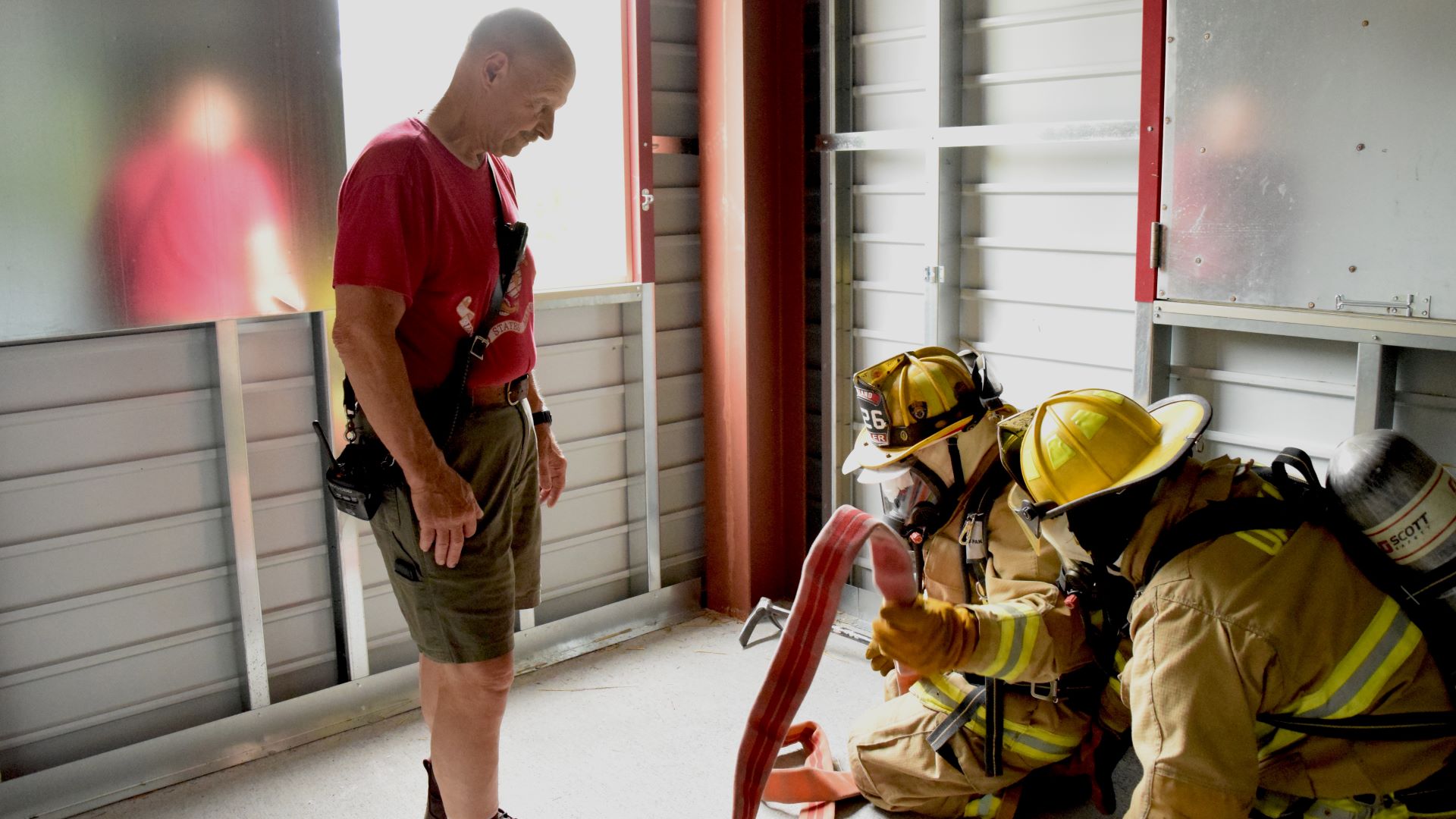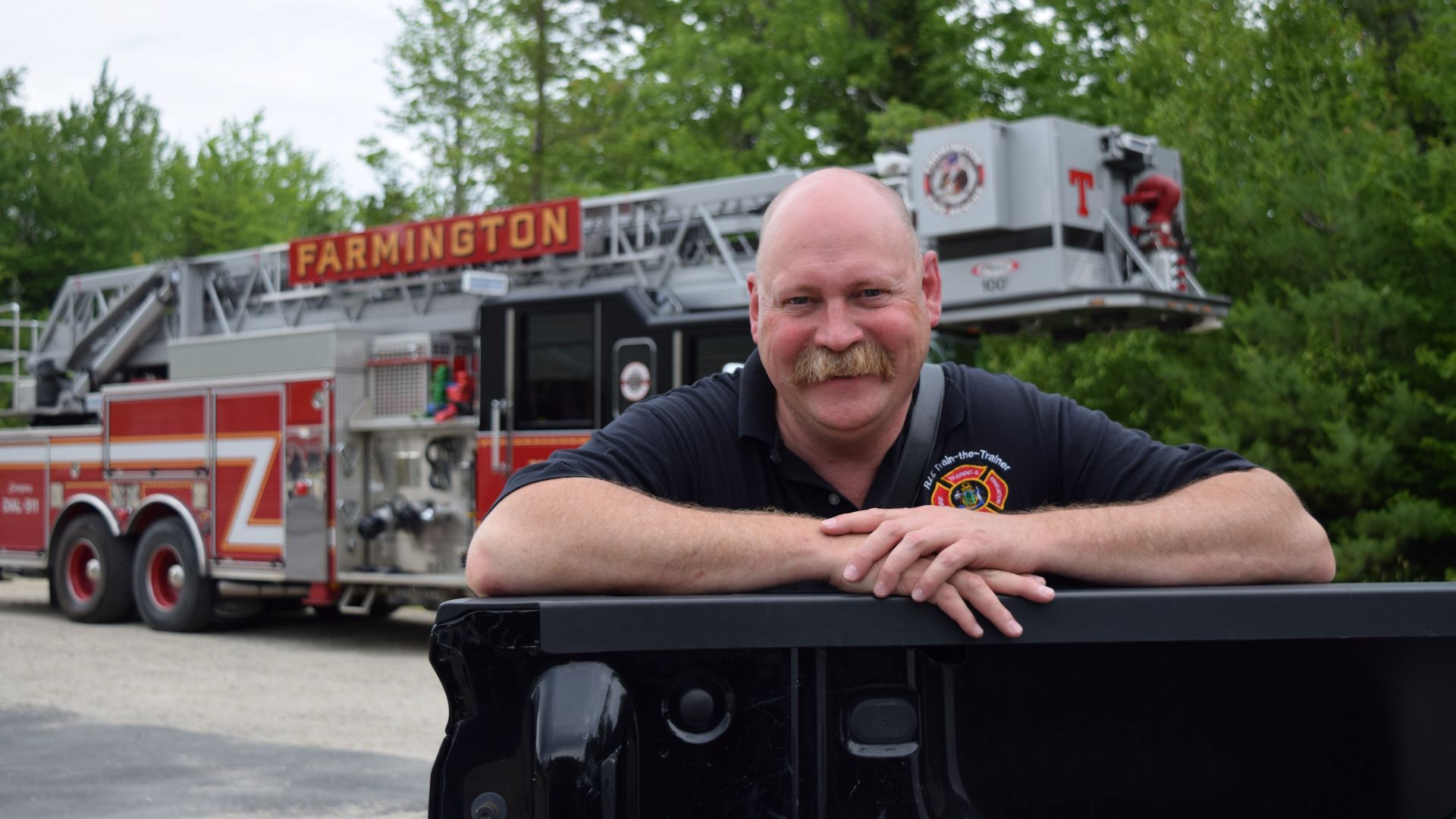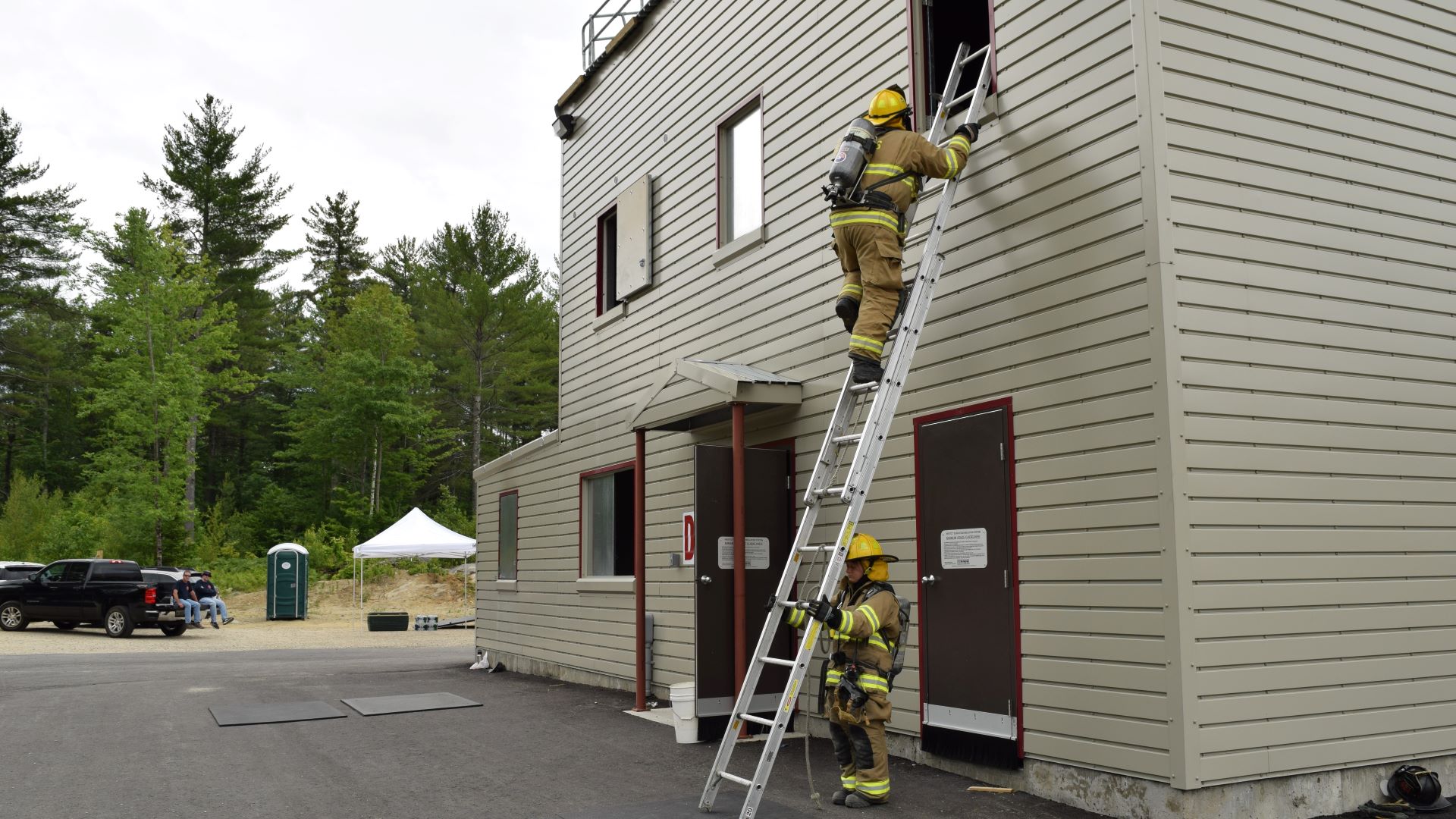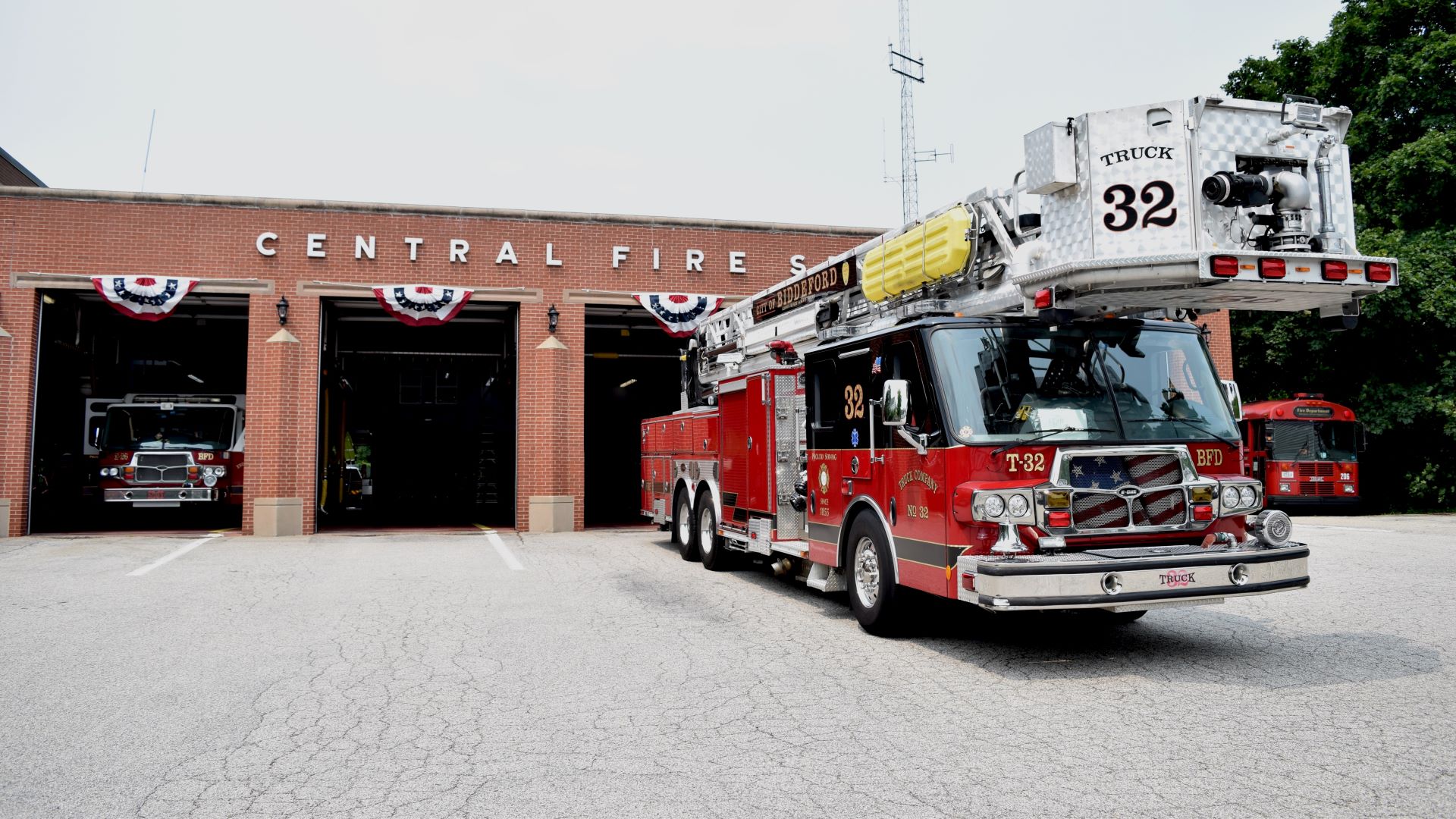Even when he works two consecutive 24-hour shifts, Chris Aberle rarely sleeps at the fire station.
Sometimes he tries. If he is lucky, he might pick up a couple hours of rest. But lately his shift has been getting calls at night.
“No one ever sleeps, you know, even if we had no calls from midnight to 8 a.m.,” he said. “No one really sleeps because you’re just waiting for that bell to go off.”
Twenty-four hour shifts can be exhausting, he said. Back-to-back 24-hour shifts are worse.

“It’s tough to stay two days in a row. Because you’re like, if you’ve been up all night, I don’t want to be here another day. It wrecks your body. It wrecks your body and trying to do it all over again the next day, you’re like, ‘Here we go.’ ”
Lately, Aberle and the other firefighters at the Biddeford Fire Department have worked extra shifts, which are first assigned on a volunteer basis. If no one volunteers, the fire chief informs the person at the top of the “force list” that they must take the shift.
During a staffing shortage as severe as Biddeford’s, firefighters may show up for one shift and find out the department needs them to work two. Eleven of the department’s 44 full-time firefighting positions are vacant and, with an average of 16 calls each day, the station can’t afford to be understaffed. Lives could be at risk.
This leaves Biddeford’s firefighters to pick up the slack.
Aberle has only so much he can give. He has two daughters, a fiancé and two “bonus boys,” his fiancé’s sons. He volunteers to coach his kids’ sports teams and referees hockey in the winter.
And like many other firefighters in the state, he also is a member of a second fire department.
Between his full-time job in Biddeford and his part-time/on-call duties as Arundel’s fire captain, Aberle estimates he works 100 hours per week.
He does it to make extra money. But if he didn’t pick up shifts at Arundel, it is likely they would go unfilled. Competition for per diem firefighters can be fierce, and there aren’t enough to meet the demand.
Lack of data a critical issue
Aberle is one of an unknown number of firefighters in the state. Unlike emergency medical technicians (EMTs) and law enforcement officers who are licensed by the state, there is no Maine entity that tracks the number of firefighters.
Firefighting personnel across the state say fire departments are struggling to recruit and retain career, per diem and volunteer firefighters, leaving the dwindling numbers to handle a growing number of calls. In some cases, fire departments have merged or even closed.
Joe Thomas, the Maine state fire marshal, described the shortage as a “critical” issue. Yet little evidence of a shortage exists beyond anecdotal accounts. The state doesn’t track the number of active firefighters, nor does the Maine Fire Institute.
Without reliable data, the true severity of the shortage is anyone’s guess.
“Our problem is we don’t know the numbers, and now we’re in crisis mode,” said Lt. Gerry Gay, the 1st district vice president of the Professional Fire Fighters of Maine. “Had we known the number of firefighters (in the state), we could have been on this a long time ago.”
Many veteran firefighters say volunteer fire department rosters have been shrinking for years, possibly even decades. This is particularly problematic for Maine, where 95% of fire departments are fully or mostly staffed by volunteers.

Volunteer, also referred to as “on-call,” firefighters are usually paid. Some departments pay hourly, while others disburse a set amount of funding each year to members of their call list based on their activity. Trainings and meetings are usually unpaid.
Maine’s firefighter shortage mirrors a national trend. According to the National Fire Prevention Agency, the U.S. had more volunteer firefighters in 1986 than 2018, despite significant population growth. The number of career firefighters rose during that time period, but not enough to make up for the decline in volunteers.
Faced with declining numbers, Maine fire departments have increasingly banded together to form mutual aid agreements. Mutual aid partners automatically receive notice when there is an emergency, even if it isn’t in their town.
According to Farmington Fire Chief Terry Bell, it takes 25-30 firefighters to adequately respond to a structure fire. Yet many departments in the state have trouble gathering 10 firefighters on their own, let alone triple that amount.
It is becoming increasingly common for multiple departments to be needed to combat a single structure fire.
Three years ago, fire and EMS services on and near Mount Desert Island created a formal mutual aid agreement. Bar Harbor Fire Chief Matt Bartlett explained that when a fire breaks out in Bar Harbor, he directs dispatch to request assistance from the department’s mutual aid partners: the Ellsworth, Trenton, Southwest Harbor, Tremont and town of Mount Desert departments.
All together, six departments and an additional EMS service are involved in fire-related emergencies on Mount Desert. Sometimes the fire is too big, and further aid from Lamoine and the town of Hancock is requested.
“And that’s for just a typical house fire,” Bartlett said. “Bigger, then we’re probably reaching way across (Hancock) county (for help).”
Logistical perils
A collective response has its faults. Relying on faraway fire departments has a “domino effect,” he explained. The farther firefighters travel to assist, the farther they have to drive in case they need to respond to an emergency in their home community.
“If you have (an emergency) near your community, your fire department could be at a fire that’s a half-hour, 45 minutes away. So we’re spreading everybody very thin,” Bartlett said.
“When I first started (in 1990), if we had a house fire, the only people there were just Bar Harbor because we had the people to take care of it. But over time we were losing — everybody’s losing firefighters. So we’ve had to come together and figure out a plan to help each other out.”

In Waldo County, Liberty Fire Chief Bill Gillespie said that 10 years ago, it took personnel from three departments to put out a fire. Now it might take seven. “It’s certainly not uncommon for a big fire in Waldo County to strip the entire county,” he said.
On July 10, at least eight departments responded to a large multi-structure blaze in the town of Washington, in Knox County. According to Gillespie, who was at the scene with eight other Liberty firefighters, some departments were only able to gather three or four firefighters. Two departments, he said, could only provide drivers and tanker trucks.
Volunteers are usually more available for night fires like the one in Washington, Gillespie said. Yet “we struggle to get people. It doesn’t matter what time it is.”
Even as fire departments have grown smaller, many chiefs say the number of calls has increased.
Before he was the chief fire & EMS administrator of York County, Roger Hooper was a firefighter for Goodwins Mills Fire-Rescue for 40 years. In 1978, the department received 60 calls, he said. When he stepped down as fire chief in 2018, the number had grown to over 700.
According to Gillespie, the Liberty Fire Department received 164 calls last year, about triple the amount from 30 years ago. Other fire chiefs cited similar rises.
A ‘mystery number’
Nearly every fire official interviewed confirmed the increasing shortage of firefighters in Maine.
Yet no one knows exactly how many firefighters are active in the state today, let alone 10 or 20 years ago. The only available numbers are rough estimates rounded to the nearest thousand.
Without this information, the only evidence for the shortage is anecdotal.

Jim Graves, the director of fire training at the Maine Fire Institute, said a statewide firefighter count is a “mystery number” that no one can pinpoint.
Of the 14 county EMAs that responded to the Maine Monitor’s information request, just five were able to provide personnel counts based on recent surveys. Three EMA representatives gave their best guess, and six counties had no information on fire department members to share.
In 2010, Oxford County began compiling a resource manual that includes fire department personnel counts every other year. That year, the county counted 708 fire department members. By 2020, the number had dropped to 607, a 14% decrease in a decade.
Even so, experts say personnel counts do not accurately represent the number of active firefighters.
Non-firefighting members such as support staff and members who are strictly EMTs may be included. If departments simply report the number of people on their call lists, they are also likely including members who are no longer active. Furthermore, it is routine for firefighters to work at more than one department, leading to unintentionally double- or triple-counting a person.
Teresa Glick, the deputy director of the Oxford County EMA, confirmed that its data “likely” includes support positions and does not account for people who are with multiple departments.
Earlier this year, the Knox County EMA conducted a multi-agency roster survey. Its director, Ray Sisk, said they counted 336 people who were affiliated with fire departments in the county, adding that “likely the number is lower, but this should get you within 20% or so.”
Sagadahoc County EMA may be the only county to detail personnel names and positions, preventing duplicate counting and making it possible to separate firefighting members from other staff. Sarah Bennett, the director, said its survey was conducted last year as part of the county’s COVID-19 response.

Part of the problem, State Fire Marshal Joe Thomas said, is that fire departments have always been locally focused.
“Law enforcement has always used things like the criminal database … to track their types of activity. That demand was never really pushed on the fire service,” he said. “Consequently, most of the data that existed about fire departments existed with the fire department and no place else.”
The Margaret Chase Smith Policy Center (MCSPC) at the University of Maine began investigating the issue two years ago. In partnership with the Hancock County Firefighters Association (HCFA), the MCSPC received funding from the Maine Community Foundation to study the fire service in Hancock County.
According to Tommy Morris, president of the HCFA, the initial exploratory study, conducted in 2019-20, found an “urgent need for further policy research and intervention.”
Again, ‘Domino effect’
As volunteer fire departments in Hancock County and across the state edge toward closure, firefighters from neighboring departments are forced to bear the burden of increased time demands and operational costs, creating a “domino effect,” Morris wrote in an email to the Maine Monitor. “The burden this poses to emergency responders and emergency response infrastructure across the state would put countless Mainers at risk in the years ahead if left unattended.”

The two-part initiative in Hancock County will first seek to evaluate the number and capabilities of fire service personnel, later investigating potential solutions to improve recruitment and retention of paid, per diem and volunteer personnel. The second phase also will include an economic analysis of current trends and proposed solutions.
This study will be used as a model by the State Fire Marshal’s office and implemented statewide. Thomas said this will be the first time the state has tried to survey each Maine fire department.
Although there is little data on firefighters, Thomas said he sees evidence of the shortage in other ways.
In the most recent five-year loss analysis conducted by the Bureau of Insurance, he noted that fire damages in Maine increased by an average of $10 million per year from the previous five-year analysis. While he notes there could be many reasons for the increase, he suspects the firefighter shortage played a part.
“I’m hoping that the statewide study confirms what my senses are telling me,” Thomas said.
No easy answer
Traditionally, fire departments have more or less been left on their own to address problems.
Some have run successful recruitment drives and are exceptions to the statewide shortage. For many others, a solution hasn’t been as forthcoming.
Recently the fire service had some success lobbying the Maine Legislature for programs to help improve firefighter retention.
In 2015, the Maine legislature passed a bill to create the Length of Service Awards Program (LOSAP), which aims to establish a pension-like program for both volunteer and career firefighters.

Although the bill was passed, it wasn’t funded. It took two years to push then-Gov. Paul LePage to appoint the board that Gillespie chairs.
It was only this year that the program received funding from the legislature. The board requested $2.5 million, but received $500,000, just enough to hire a third-party administrator to get the program off the ground.
Since the state only provided partial funding, it will be up to local municipalities to contribute to the program.
“We’re trying to keep the members that we have because we know the numbers are really going down,” Gillespie said.
Fire officials say LOSAP is only part of the solution. As the traditional, municipal-level volunteer department becomes harder to sustain, some are looking to the state to lead more radical changes.
Regionalizing the fire service would streamline response and provide more consistent coverage, several officials said. School districts, which often transcend town lines, are one example of regionalization in Maine.
Chief Darren Woods of North Lakes Fire and Rescue, who is also the director of Aroostook County’s EMA, said his department operates on a regional model. They have three stations that provide coverage for four unorganized territories and one town.
The regionalized model works well for their purposes, Woods said. His firefighters are geographically spread out, but having three stations in different locations allows his department to adequately cover the region.
Hooper, who wrote an editorial for the Bangor Daily News in 2015 on the firefighter shortage, described mutual aid agreements as “regionalizing by accident.” Response from regionalized departments is more consistent and organized, he said.
While a regionalized model may work for some, many acknowledged that different regions will likely require different solutions.
“There’s no one silver bullet that will fit everybody’s needs because of simple differences in each and every community within the state,” Thomas said.







